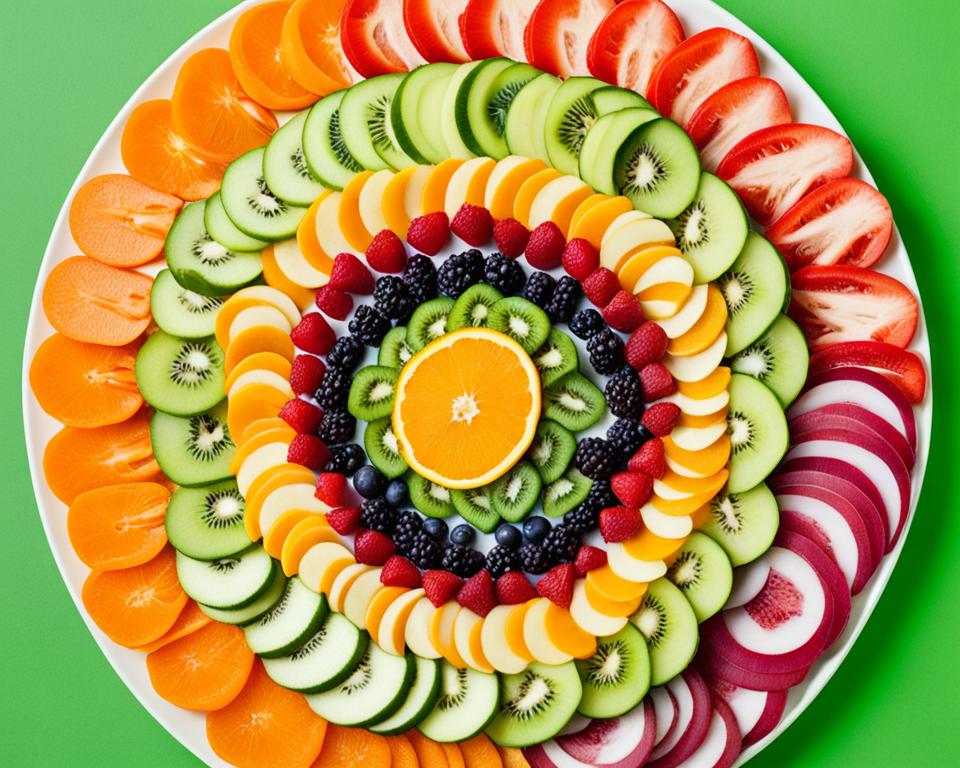Your choice of pre-hot yoga meal really matters. It can help or hinder your performance and energy levels during practice.
Hot yoga is tough and needs the right fuel for the best results. You need certain nutrients to keep your energy up, help your digestion, and make you feel good. In this guide, you’ll learn everything you need to know about eating before hot yoga. We’ll share expert tips and meal ideas to boost your performance on the mat.
Understanding Your Body’s Needs for Hot Yoga
It’s key to know what your body needs during hot yoga. This practice is really intense and requires the right fuel. This ensures you perform your best and keep up your energy. Fueling your body for hot yoga starts before you even step on the mat. Eating the right foods prior to your session can help optimize your performance and prevent any discomfort or fatigue.
When considering the best foods for pre-hot yoga, it’s important to focus on easily digestible carbohydrates. These can provide a quick source of energy without weighing you down. Opt for options such as bananas, oatmeal, or whole-grain toast with nut butter. These foods can provide sustained energy throughout your practice.
Additionally, hydrating properly is crucial for hot yoga. Aim to drink water throughout the day leading up to your session and consider adding electrolyte-rich fluids, such as coconut water, for added hydration and replenishment.
The Importance of Mindful Eating Prior to Yoga Practice
Eating mindfully before hot yoga is crucial. It makes sure you get the right nutrients and energy for your session. Mindful eating helps you connect with your body and understand its signals.
Choosing your pre-yoga meal with care is essential with mindful eating. It lets you pick foods that give you energy, easy digestion, and support your health.
Assessing Hunger Levels Before a Hot Yoga Session
Knowing how hungry you are before yoga is vital. You should eat enough to fuel your practice, but not too much. This avoids feeling stuffed during exercise.
Take a moment to truly feel your hunger. Check if you’re eating because you’re really hungry or if it’s out of habit. Listening to your body’s true needs for food is important.
Feeling hungry before yoga means picking foods that won’t weigh you down. Aim for a light, balanced meal. This should have carbs, protein, and good fats for lasting energy.
But, if you’re not hungry, that’s fine too. Some do well without eating for a few hours before. Still, always listen to your body. If you’re truly hungry before yoga, eat something to fuel your practice well.
Understanding and responding to your body’s cues is the main goal. Hunger levels and eating preferences differ for each person. So, find what suits you best.
Optimal Pre-Hot Yoga Foods for Energy and Digestion
Choosing the right foods before hot yoga is key. They keep you energized and help digestion during your practice. The foods you pick offer the energy boost you need.

Go for foods that are full of nutrients, easy to digest, and give lasting energy. These choices let you stay energized without feeling heavy or discomfort. They maintain your energy levels throughout your whole session.
Some good choices for pre-yoga meals or snacks are:
- Fresh fruits, like bananas, berries, or oranges, give natural carbs and hydration.
- Whole grains, including oatmeal or quinoa, offer fiber and slow-release energy.
- Lean proteins, such as grilled chicken, tofu, or eggs, aid muscle repair and growth.
- Leafy greens, like spinach, kale, or broccoli, are rich in vitamins and minerals for nutrition.
Remember to drink lots of water before your hot yoga session. Staying hydrated is vital for top performance and to avoid dehydration.
Choosing the best pre-hot yoga foods is crucial for your energy and digestion. This preparation ensures your hot yoga time is successful and enjoyable.
What to Eat Before Hot Yoga for Peak Performance?
If you want to perform your best in hot yoga, eating the right foods is key as much as wearing a proper dress. Fuel your body with the nutrients it needs.
Best Choices of Easy-to-Digest Carbohydrates
Choose foods that give quick energy without making you feel heavy. Foods like bananas, whole grain toast, and sweet potatoes are great choices. They’re easy for your body to use, giving you lasting energy without feeling slow.
Protein-rich foods
Good protein sources are Greek yogurt, tofu, and lean chicken. They have amino acids for muscle repair and growth. Adding protein to your pre-yoga meal keeps you strong and stops muscle tiredness.
Hydration strategies
Electrolytes are vital for staying hydrated in hot yoga. Try coconut water or electrolyte sports drinks. Sip these drinks before, during, and after class to stay well-hydrated.

Before hot yoga, eat carbs and proteins, and hydrate right to boost your energy and mood. Try different foods and drinks to see what helps you most on the mat.
What to Avoid Eating Before Stepping onto the Mat?
Before hot yoga, it’s smart to choose your meals wisely. Some foods might not sit well in your stomach or affect your energy levels. By skipping these, your time on the mat will be more enjoyable.
So, what foods shouldn’t you eat before hot yoga? Here are some you might want to stay away from:
- Heavy, greasy foods: Foods like fried dishes or big cuts of meat won’t leave you feeling your best. They can make you feel slow and heavy. Choose meals that are light and easy to digest instead.
- Spicy foods: Foods with a lot of spice, like chili peppers, can give you heartburn. This is uncomfortable, especially when doing hot yoga. It’s best to avoid these dishes.
- Caffeine and energy drinks: Caffeine gives you a quick energy hit. But with the heat of hot yoga, it can lead to dehydration and make your heart race. It’s better not to have it before your class.
- Carbonated drinks: Drinks with bubbles, like sodas, can make you feel gassy and bloated. Choose water or tea without bubbles to stay hydrated instead.
- High-fiber foods: High-fiber foods are good for you but can cause gas if you eat a lot before yoga. Choose foods that are gentle on your stomach and easy to digest.
To make your hot yoga class go smoothly, pick your meals and snacks wisely. Choose foods that are light and easy to digest. These will give you the energy you need without making you uncomfortable.
Hot yoga is all about balance and taking care of your body. Listen to how foods affect you, and change your diet as needed. Smart food choices help you gain the most from your hot yoga class and bring your mind and body together.
Timing Your Meals: When to Eat Before Hot Yoga
Eating the right meals before hot yoga can greatly affect your practice. It’s key to balance energy levels with the need to avoid feeling too full. We’ll talk about when to eat and what to eat, whether it’s a light snack or a bigger meal.
Deconstructing the 2-Hour Pre-Yoga Meal Rule
The 2-hour rule says avoid big meals close to yoga to dodge digestion issues. While a good guide, not everyone fits this plan. Testing different meal timings is vital to find what suits you best.
Light Snacks Vs. Heavy Meals: Making the Right Choice
Choosing what to eat before hot yoga depends on many factors. Light options such as fruit, nuts, or yogurt can boost energy without slowing you down. But, heavier foods like pasta might not digest fast enough and could make you feel heavy.
For a practice starting soon, like within the hour, a light snack is best. If you’ve got a bit more time, a heartier meal could work. Personal experience will help you decide what’s optimal for you.
Because everyone is unique, the perfect meal and timing could differ. Paying attention to how you feel after eating will guide your choices. With a bit of testing, you will find what boosts your hot yoga performance the most.
Recovering After Hot Yoga: Post-Practice Nutrition Tips
After hot yoga, it’s crucial to eat right to help your body recover. You will benefit from practices like increased flexibility and mental clarity. Following a balanced diet after hot yoga is important for your health.
Electrolytes and Hydration Post-Yoga
Your body loses fluids and electrolytes during hot yoga, mainly through sweat. It’s key to replenish them to stay hydrated and help your muscles recover. Essential electrolytes like sodium, potassium, and magnesium are vital for your body’s functions and maintaining fluid balance.
Drink water or try electrolyte-rich beverages such as coconut water. These will help you hydrate and support your muscles. Always drink when you are thirsty, and make sure to keep hydrating throughout the day to help your body recover.
Ideal Post-Yoga Meals and Snacks for Muscle Recovery
Eating the right meals and snacks after yoga can boost muscle recovery and energy levels. Look for foods rich in carbohydrates and protein to help your muscles heal and grow. Foods like quinoa, tempeh, chickpeas, leafy greens, and berries are perfect.
These foods provide nutrients, antioxidants, and fiber, helping with recovery. Adding healthy fats from avocado or nuts can improve how your body absorbs nutrients and keep you full.
Pay attention to your hunger and fullness signals. Try to eat a balanced meal within two hours of finishing your yoga to boost recovery. If a big meal doesn’t feel right, a smaller meal or a nutrient-dense snack like a homemade energy bar, Greek yogurt with fruit and nuts, or a green smoothie with plant-based protein is a great option.
By focusing on what you eat after yoga and using these guidelines, you can get the most from your hot yoga sessions. This will ensure your body recovers well.
Eating the right foods before hot yoga is key to doing well and feeling good. Knowing what your body needs and when to eat can make your yoga practice better. Pick foods that are full of nutrients, easy on the stomach, and keep you going.
Drinking enough water is also very important before, during, and after hot yoga. It keeps your body in balance for better performance. And don’t forget about what you eat after. Foods and drinks rich in electrolytes, like coconut water, can help your muscles recover.
Starting hot yoga means focusing on what you eat and how you feel. Pay attention to your hunger and pick foods that help your yoga. By eating the right things, you’ll do better in yoga, get more energy, and enjoy it more.
FAQs
Why is mindful eating important prior to a yoga practice?
Mindful eating ensures your body gets needed nutrients. This boosts your yoga experience.
How do I assess my hunger levels before a hot yoga session?
To gauge hunger before yoga, pay attention to signs like stomach noises or weakness. This helps you decide how much to eat.
What are the optimal pre-hot yoga foods for energy and digestion?
Good foods before class are easy on the stomach and packed with energy. Think fruits, grains, and lean meats.
What are the best choices for easy-to-digest carbohydrates before hot yoga?
For a simple carb kick before yoga, choose fruits, grains, and veggies that fill you up without slowing you down.
What protein sources should I consume before hot yoga?
For protein before class, try Greek yogurt, nuts, or protein bars. These help your muscles bounce back.
Are there hydration strategies beyond just water for hot yoga?
For staying hydrated, try drinks high in electrolytes like coconut water. They balance your body’s salts during yoga.
What foods should I avoid eating before hot yoga?
Avoid foods that might make you feel bad or sleepy in yoga. This includes big, greasy, or spicy meals.
How can I time my meals before hot yoga?
The 2-hour rule for pre-yoga meals advises on carbs and protein. But, it’s key to adjust based on how your body feels.
Should I opt for light snacks or heavy meals before hot yoga?
Choosing between snacks and meals is your call. Snacks give fast energy, while meals take longer to digest.
